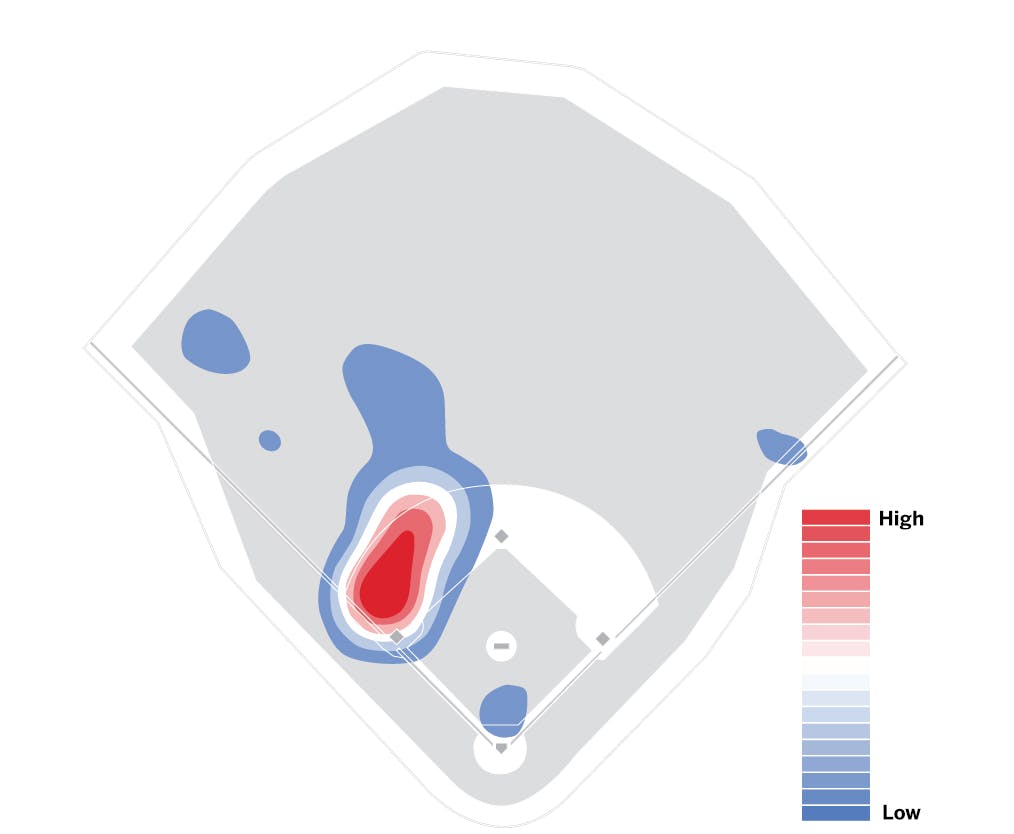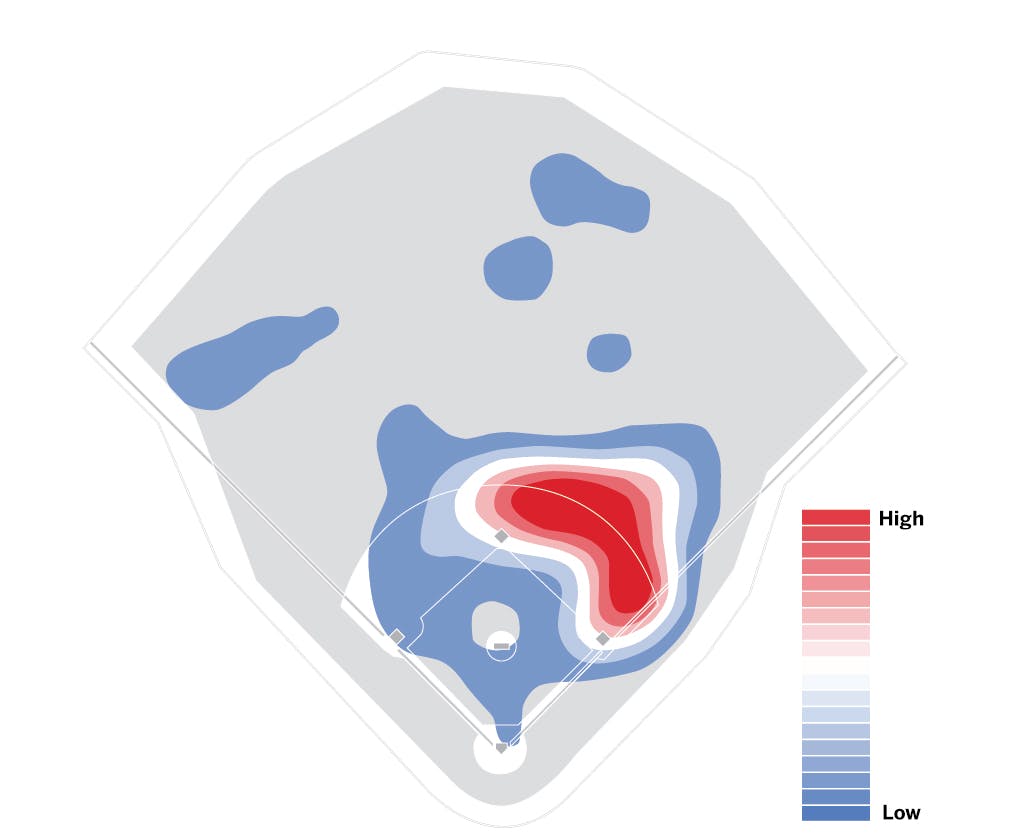FORT MYERS, FLA. – Max Kepler considered the question, started to answer, and thought better of it.
"I'll keep my mouth shut," the Twins right fielder said with a slight smile, "about what I think of the shift."
Joey Gallo cursed when the topic was broached, shook his head and likewise decided to keep his opinion to himself.
"I don't want to say what I think is fair and what isn't, and wind up in a headline like always," the new Twins outfielder explained. "Every time I answer questions about the shift, people want to make me the face of it."
Justin Morneau wasn't a part of those clubhouse discussions, but he understands the sentiment, the emotion that defensive shifts trigger, particularly in lefthanded sluggers such as himself and the two Twins outfielders.
"[Players] are trained from Little League on that if you hit the ball hard, most of the time you will be rewarded for it," the 2006 AL MVP and current Twins broadcaster said. "When that's no longer true, yeah, it's frustrating. You hit a hard line drive to the outfield, and it lands in the second baseman's glove and it's an out every time, that's tough."
Which is why Morneau believes that Major League Baseball's new rule requiring infielders to position themselves on the dirt, with two stationed on either side of second base, might have more effect on hitters' mental health than on their statistics.
"Not seeing three guys standing where you're most likely to hit it, there's a certain comfort level that comes with that," Morneau said. "That first hard ground ball that rolls into the outfield, it's going to be such a lift, mentally."
It has already happened to Kepler, actually. This spring in a Grapefruit League game at JetBlue Park against the Red Sox, Kepler pulled a two-hopper between the first and second basemen. "The second baseman laid out trying to get it. Last year, that would have been into the shift" because the defense would have been playing deeper, Kepler said. "Seeing a ground ball get through, that was very strange."
That's because Kepler and Gallo face that stacked-up infield more than almost any other players in baseball. In 90% of their plate appearances last season, three infielders stood on the right side of second base, one of them in short right field.
The result? If they yanked a ground ball toward right field, they had little chance of reaching base, no matter how hard the ball was hit. Kepler batted .092 on pulled grounders, Gallo .100. By comparison, Morneau, whose career ended before shifts became commonplace, hit .236 for the Twins on ground balls hit toward right field.
"When I was hitting balls into shallow right field at over 100-mile-per-hour exit velo and they were getting caught, that's frustrating to anyone," said Kepler, who lost 10 such likely hits over the past two seasons. "If you're on that list, the top lefties who got shifted, then yeah. I try to keep on an even keel, but I get frustrated by it."
Six against one is no fair
Keeping infielders in the infield is Gallo's biggest issue, especially since most teams move their center and left fielders several feet closer to right field, too. The effect, he said, is "taking away doubles, taking away any chance of an extra-base hit because there are six guys out there. It pretty much changes how I hit — I can only hit the ball on the ground to the left to get a hit, or out of the park."
The solution, as frequently suggested to Gallo and Kepler by fans, is to simply hit the ball to the opposite field, something much harder than it sounds, and a tactic that would eliminate, they said, as many hard-hit balls as the shift does.
"I tried. You can do it, but it's more of a hit-and-run approach," Kepler said. "You're probably not going to drive the ball if you try to go that way. It's going to be like a ground ball or weak line drive."
Gallo, too, tried to make the defense pay, of course he did, "many, many times," he said, laughing at the thought. "I mean, people think it's so easy against guys throwing 100-mile-per-hour fastballs and 90-mile-per-hour sliders. 'Just put the bat out and hit it the other way.' But even if I do it, now I'm just a singles hitter. It takes me completely out of what I do. And it makes the game less enjoyable. It wasn't as much fun to watch. This is more baseball-like."
Some players may still face unusual defenses, as Gallo knows first hand. The Red Sox earlier this month moved center fielder Adam Duvall into shallow right field during Gallo's at-bat, with left fielder Raimel Tapia shifting to center field.



For now, that defense remains legal. But Gallo said he isn't concerned that he'll see it often. The risk, he believes, is too high.
"With the old shift, if I go the other way, it's a single. But with [no fielder] in left, if I hit one through the infield, it's at least a double, maybe more," he theorized. "Plus, they've got to run back and forth with the pitch clock counting down."
The game between the ears
So will eliminating radical shifts have a major effect on Kepler and Gallo's production? Or that of Byron Buxton, who since his power emerged in 2019 has faced an overloaded left side more than all but a half-dozen or so other righthanded hitters?
"Yeah, don't forget Buxton," Morneau said. "He hits the ball as hard as anyone, and there won't be someone standing there every time."
Still, Morneau is skeptical that the Twins offense will hugely benefit from the ban on shifting — at least, not from a sudden plethora of ground balls that get through the infield. Both Kepler and Gallo are far more valuable for their power than than batting average; that will determine whether they bounce back from disastrously unproductive 2022 seasons.
Yet the lack of a crowded infield could help them generate more power, too, Morneau believed.
"It gets in your head, in your approach. That's when it is going to make a difference — when guys are standing in the box, before they even swing," he said. "Not sure, results-wise, if it's going to be a big deal, but confidence is such a big part of hitting. It should give guys more confidence."